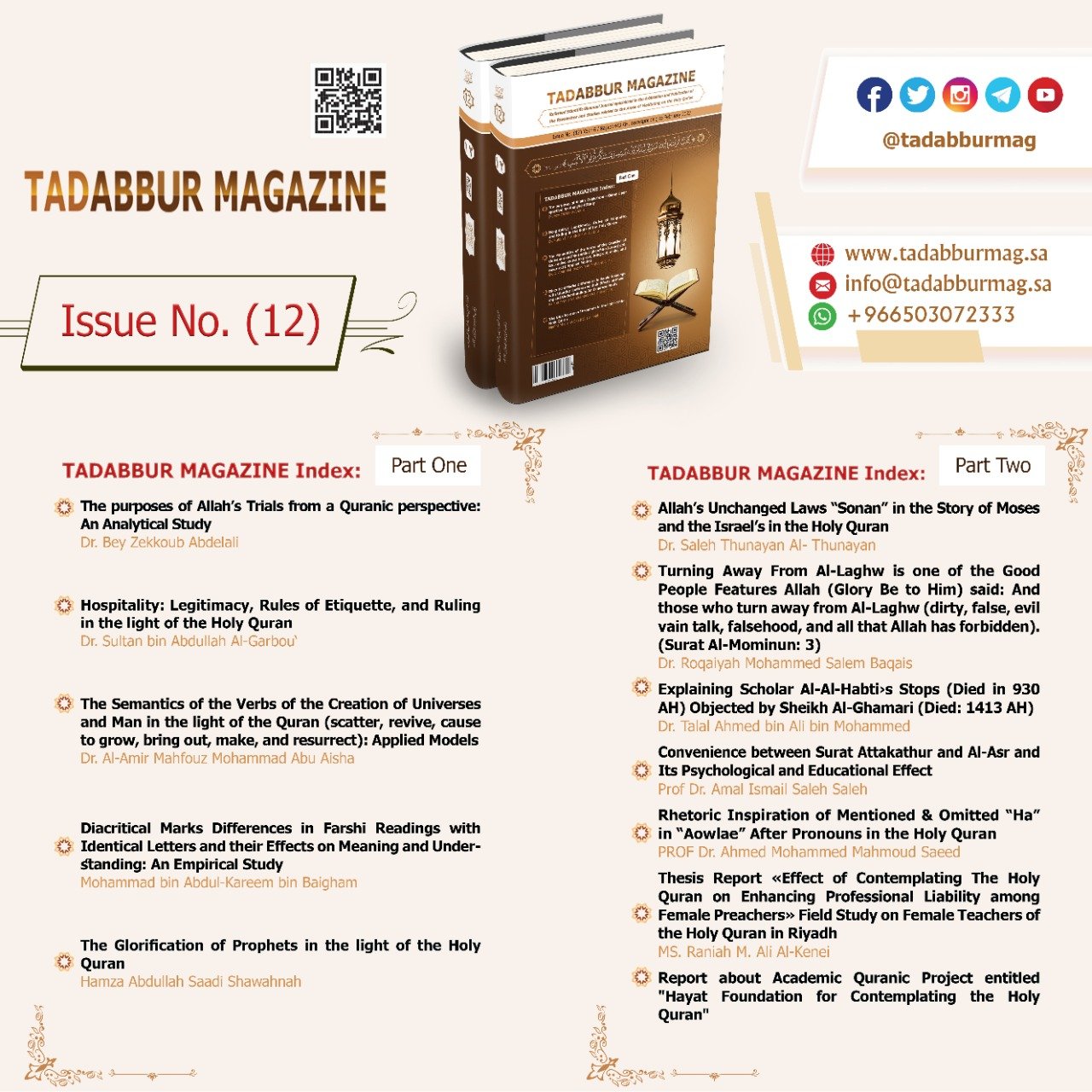Diacritical Marks Differences in Farshi Readings with Identical Letters and their Effects on Meaning and Understanding: An Empirical Study
Main Article Content
Abstract
This paper is about the Farshi readings with identical letters and different diacritical marks and the effect of this variation on the meanings and reflection of these readings. This is due to the fact that a diacritical mark is essential for determining the meanings and semantics of words. The diacritical marks we mean are not the inflectional ones; rather they are the fixed marks of root words, which represent the phonetic symbols of words which if are changed, the values of words, their meaning, semantics, phonetic symbols and expressive sounds will differ as well.
Accordingly, this paper followed an inductive analytical method based on an applied study to highlight the reflective aspect of the Quranic readings by showing the importance of the diacritical marks of readings with identical letters but different diacritical marks in order to demonstrate the effect of the diacritical marks on meaning and semantics in addition to other variations. Paying attention to the semantics of reading words in terms of their letters and diacritical marks is crucial for understanding these readings. It is not possible to comprehend the miracles of the Quran in general and the readings in particular without mastering Arabic language. Readings) are repositories for many Arab dialects. Giving attention to the references dealing with the rationale behind readings is one of the practical principles of reflecting on them. Focusing on meanings, lessons and purposes underlain by words, letters and diacritical marks results in useful sciences and significant accomplishments, which constitutes the major purpose of revealing the Holy Quran.
Downloads
Article Details
Conference Proceedings Volume
Section

This work is licensed under a Creative Commons Attribution-NonCommercial 4.0 International License.
Indicating to the intellectual property, copyrights, and open access right:
According to the Budapest Initiative 2002; tadabbur Journal, which is issued by Khibrat Taibah For Research and Studies in Medina, provides free open access to its publications, and applies the Creative Commons license:
Attribution- Non-Commercial 4.0 International (CC BY-NC 4.0) for the works it publishes from peer-reviewed scientific research and reports, which are freely available on the Internet, and which allows any user to read, download, copy, and distribute (Convert), print, search, or create links to the full texts of the journal’s research and publications, and analyze them in an automatic manner for discovering them, sending them as software data, or using them for any other legal purpose, without financial, legal, or other technical barriers beyond those related to Internet access.
It also highlight that the only barrier to reproduction and distribution, and the only role of copyright in this field, is the necessity of granting the authors of the journal’s research and reports and the publisher the journal; Control over their works, and the right to official recognition and reference citations.





